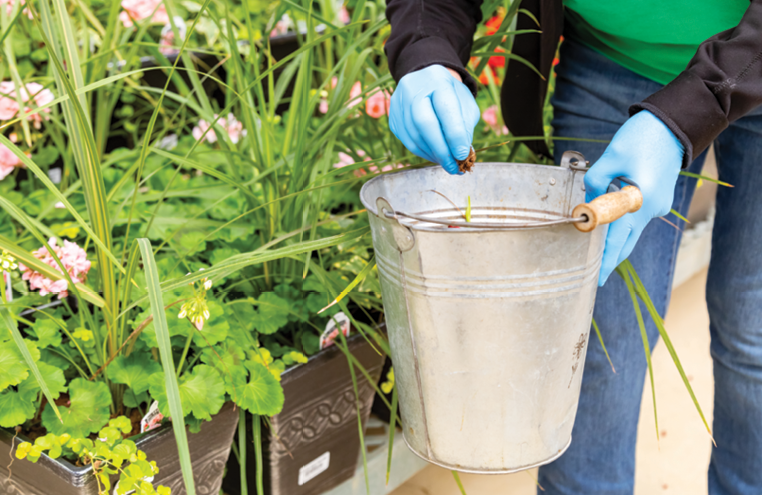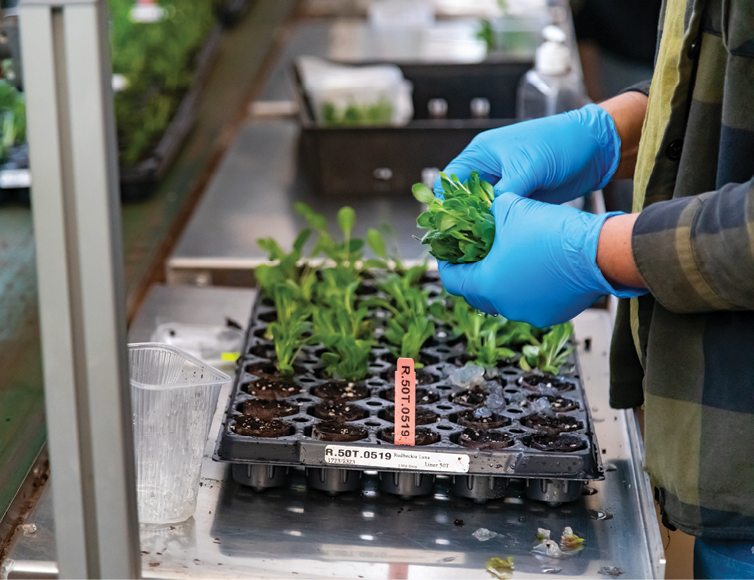
For most greenhouse and nursery growers, pest control and chemical applications are commonplace. Not only is crop protection common, but it’s also often critical for maintaining healthy plants and maximizing yields in a year-round growing season.
Pests like insects, mites and diseases can quickly devastate crops and, in turn, cause significant financial losses. Around 60% of growers report spending anywhere from 51 to more than 250 labor hours on pest management each year according to a recent Greenhouse Management survey. (bit.ly/pest-research)
As you focus on the health of your plants, remember to also prioritize the health of your employees. I’ve gathered a few reminders to keep in mind this season.
Recognize the signs of exposure
Before we turn our attention to safety guidelines, it’s important to first understand the signs and symptoms of exposure. The sooner you can act, the earlier you can help seek medical attention if needed. While pest control products can affect people differently, here are common symptoms:
- Rash
- Tender nose
- Sore throat
- Watery eyes
- Vomiting
- Headache
The causes of exposure can range from skin or eye contact to inhalation. Remind your team to wash their hands and face prior to eating, drinking, smoking or using the restroom.

Understand pesticide labeling
While your team may interact with a variety of pesticides, they should all come with warning labels. One of the first steps to responsible use is understanding what each warning label means. Three words have special meaning:
- Danger: Extremely harmful
- Warning: Moderately harmful
- Caution: Slightly harmful, but could still make you sick
Note: Never transfer pesticides to unlabeled containers or take them home for personal use.
Follow safety guidelines and take precautions
No matter your role — whether mixing, loading or applying pesticides — thorough training is needed to reduce the risk of exposure. Topics should cover safety around spray equipment, handling contaminated containers and working in areas that have been sprayed within the last 30 days.
Wear appropriate personal protective equipment (PPE): This may include gloves, eye protection, a respirator and a long-sleeved shirt and pants. The type of PPE required will vary depending on the pesticide being used.
- Read and review the pesticide label: The label will contain necessary information about the pesticide, including safety precautions, mixing instructions and application rates.
- Mix in a well-ventilated area: To help mitigate the risk of employees inhaling fumes or dust from crop protection products.
- Plan your work environment: Choose calm, non-windy days for application to minimize drift if you’re applying products outside of a controlled environment.
- Inspect chemical applicator equipment: Schedule a regular cadence to inspect and maintain spraying equipment for leaks or malfunctions. Remove and repair any items with issues immediately.
- Store pesticides in a safe location: Follow label recommendations and avoid storing products near extreme temperatures. Talk with your local fire department to share the location of pesticides on your premise to help them better plan for potential emergencies. The EPA offers storage (bit.ly/pesticide-storage) and containment (bit.ly/pesticide-containment) guidelines.
- Control, contain, and clean up spills: Before a spill occurs, discuss the Three C’s (bit.ly/clean-spills) with your team. Provide details about the cleanup, disposal and decontamination process.
- Comply with the EPA’s Worker Protection Standard (WPS): Stay updated and follow the EPA’s Worker Protection Standard. Some of the key requirements include:
- - Pesticide handler and agricultural worker training
- - Decontamination supplies
- - Personal protection equipment (PPE) including respiratory protection
- - Posting requirements
- - Restricted entry intervals (REIs).
Additional information can be found in the EPA Pesticide Worker Protection Standard “How to Comply” Manual (bit.ly/pwp-manual).
If anyone is exposed
Despite careful measures, accidents can still occur. If you or your team encounter potential exposure, react quickly.
- If you get pesticides in your eyes: Rinse your eyes for 15 minutes with cool water and go to the nearest hospital.
- If you get pesticides on your skin: Remove your clothes immediately and rinse your skin with soap and water.
Make sure your employees know where to find a first aid kit and how to get emergency medical help. A well-documented, well-communicated action plan can improve the odds of an effective response by your team.
Looking ahead
I’ve covered a lot of ground on a risk that has existed throughout our industry for decades. It’s worth a reminder: Pest control products aren’t something to fear, but they are something to handle responsibly.
The reminders I’ve shared here are meant to drive conversations and awareness within your business. It shouldn’t replace formal trainings with your team, or act as a substitute for recommendations specific to your operations.
Most of all, don’t lose sight of the bigger picture.
With a few precautions, you can prioritize crop yields without sacrificing the health and safety of your team. Stay safe and please reach out if you have any questions.
Latest from Produce Grower
- TIPA Compostable Packaging acquires paper-based packaging company SEALPAP
- Divert, Inc. and General Produce partner to transform non-donatable food into Renewable Energy, Soil Amendment
- [WATCH] Sustainability through the value chain
- Growing leadership
- In control
- The Growth Industry Episode 8: From NFL guard to expert gardener with Chuck Hutchison
- 2025 in review
- WUR extends Gerben Messelink’s professorship in biological pest control in partnership with Biobest and Interpolis





